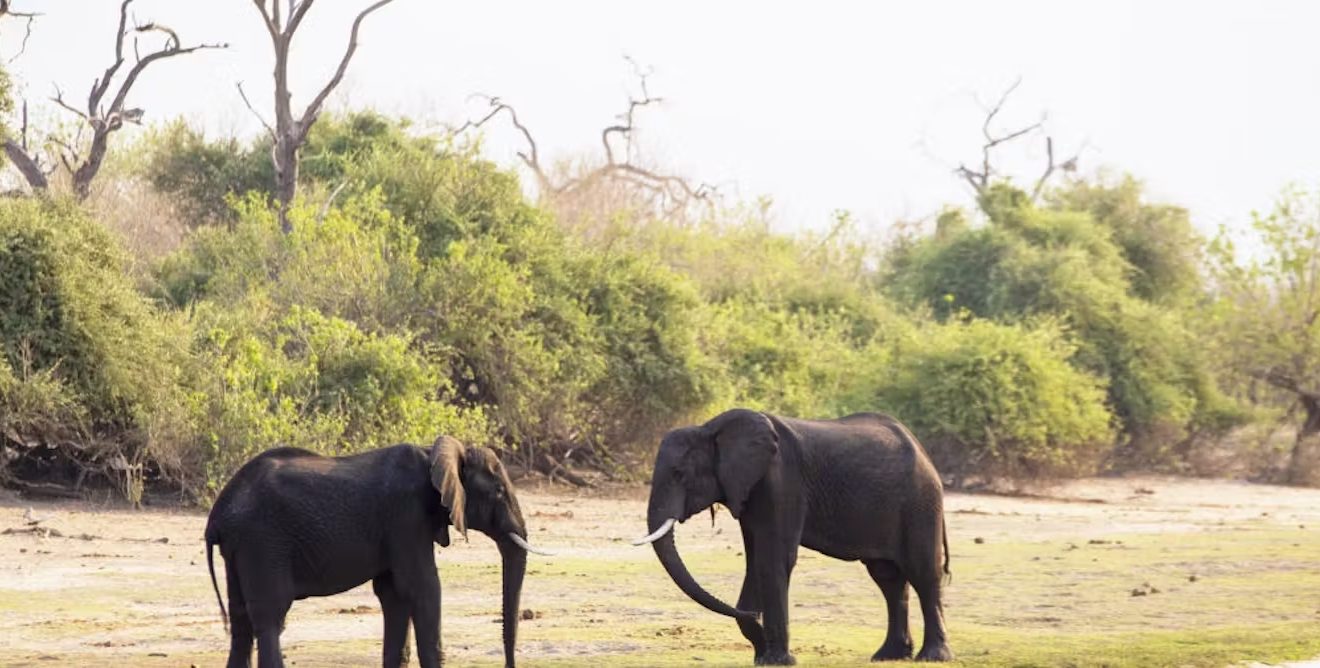Over many years, researchers examining elephants have noted an odd phenomenon: when an elephant speaks to a group, all of the others answer, but sometimes only one individual does. This has given rise to an intriguing hypothesis: may elephants speak to each other using the same kind of names? A recent study of wild African savanna elephants within Kenya confirms this theory, implying a new degree of intelligence in elephant communication.
Research’s Setting and Methodology:
Researchers studied over 100 elephants in two key areas in Kenya, including Amboseli National Park and Samburu National Reserve. Amboseli National Park, located at the base of Mount Kilimanjaro, is well-known for its elephant population and considerable studies on these magnificent animals. Samburu National Reserve in northern Kenya also provides an abundance of habitat for elephants as well as a unique atmosphere in which to observe their behavior.
The primary emphasis was on rumbles, which are low-frequency sounds produced by elephants’ vocal cords and are similar to human speech. These rumbles can travel considerable distances and play an important role in elephant communication. The researchers used a machine-learning algorithm to analyze these vocalizations, hoping to uncover trends and components that could suggest individual-specific cries.
The machine-learning model utilized in this work trained to detect small differences in rumbles. This entailed analyzing thousands of recordings and establishing unique sound fingerprints associated with individual elephants. The model’s capacity to detect these differences was crucial in identifying the name-like elements in the calls.
Practical Approach:
To test their idea, the researchers created audio playback tests. They presented recordings of rumbles to 17 elephants and observed how they responded to various sorts of sounds. The idea was to see how elephants responded to calls that appeared to intended for them vs those directed at other elephants.
The playback studies were carried out in controlled conditions within the elephants’ natural environments. The researchers employed high-quality recording equipment to guarantee that the recordings were clear and realistic. Each elephant’s response extensively recorded, including its motions, vocalizations, and general reaction to the calls.
Behavioral Assessments:
The outcomes of the recording experiments were instructive. Elephants responded aggressively to calls that appeared to be intended for them. They showed more enthusiasm, went towards the noise origin, and expressed more than after they heard calls intended for others. These responses demonstrated that elephants could differentiate between calls aimed at them and those intended for others.
Results and Significance:
The study, released in the journal Nature Ecology & Evolution, suggests that elephants may address each other using names. According to Mickey Pardo, the primary author and a behavioral ecology professor at the University of Cornell, this behavior necessitates advanced learning ability as well as a thorough awareness of social interactions. Elephants must learn to connect certain sounds with specific people and exploit these sounds to draw their attention.
Being capable of addressing each other personally emphasizes the significance of social relationships among elephants. Sustaining numerous interpersonal relationships is critical for these creatures, emphasizing their intricate social systems and interactions. Elephants, recognized for their cognitive ability, memory, and problem-solving abilities, also communicate intricately through visual, aural, and tactile gestures, especially when meeting one another.
Importance and Preservation:
This study emphasizes elephants’ outstanding cognitive capacities and the requirement for their preservation and protection. Understanding elephants’ sophisticated social interactions can serve to pique interest and drive conservation efforts. According to George Wittemyer, a co-author and conservation biologist at the Colorado State University, this study demonstrates how bright and fascinating elephants are.
Elephant conservation initiatives encounter several problems, including habitat loss, illegal hunting, and human-wildlife conflict. This study has the potential to increase support for conservation efforts by highlighting elephants’ outstanding intelligence and social complexity. Protecting these animals entails not only preserving a species but also safeguarding their complex relationships and cultural heritage.
Prospective Studies and Potential:
The potential of humans “talking” with elephants, as exciting as it seems, is still a long way off. Current research is still looking at the fundamental ingredients and grammar of elephant vocalizations. Knowing how these utterances encode information is the next step in learning more about elephant communication.
Technological advancements, such as enhanced audio recording devices and powerful analytical tools, are bringing up new study opportunities. These tools allow scientists to more precisely record and analyze elephant vocalizations. Continued research in this area may lead to advances in our knowledge of elephant communication.
Prospects for Human-Animal Communication:
Elephant communication research can provide useful insights into the larger topic of human-animal communication. Understanding how elephants utilize vocalizations to transmit specific information can help us find better ways to engage with other animals. This study emphasizes the possibility of significant interaction between animals and human beings.
As scientists understand more about elephants’ cognitive and communicative capacities, ethical concerns become more significant. Recognizing the deep inner existences of these animals necessitates greater empathy and concern in how we engage with and handle them. This study promotes more humanitarian and ethical methods for managing wildlife and conservation.
Cultural Importance of Elephants:
Elephants have long been revered in human society, representing power, wisdom, and loyalty. They are adored in many cultures and mythology around the world. This study expands our understanding of elephants, demonstrating their cognitive abilities and social sophistication.
Elephants appear in many civilizations’ mythology, sacred literature, and art. For example, in the Hindu faith, the elephant-headed lord Ganesha represents intelligence and the removal of barriers. Elephants are also highly valued in African civilizations, where they are frequently associated with ancestral spirits as well as symbols of strength and fertility.
Conclusion:
The finding that elephants can call one another by name demonstrates their outstanding cognition and social complexity. The study not only improves our comprehension of these amazing animals but also emphasizes the need to protect their native ecosystems and social networks. By continuing to research and conserve elephants, we can guarantee that generations to come will be amazed at their incredible skills and benefit from their extensive social lives.

